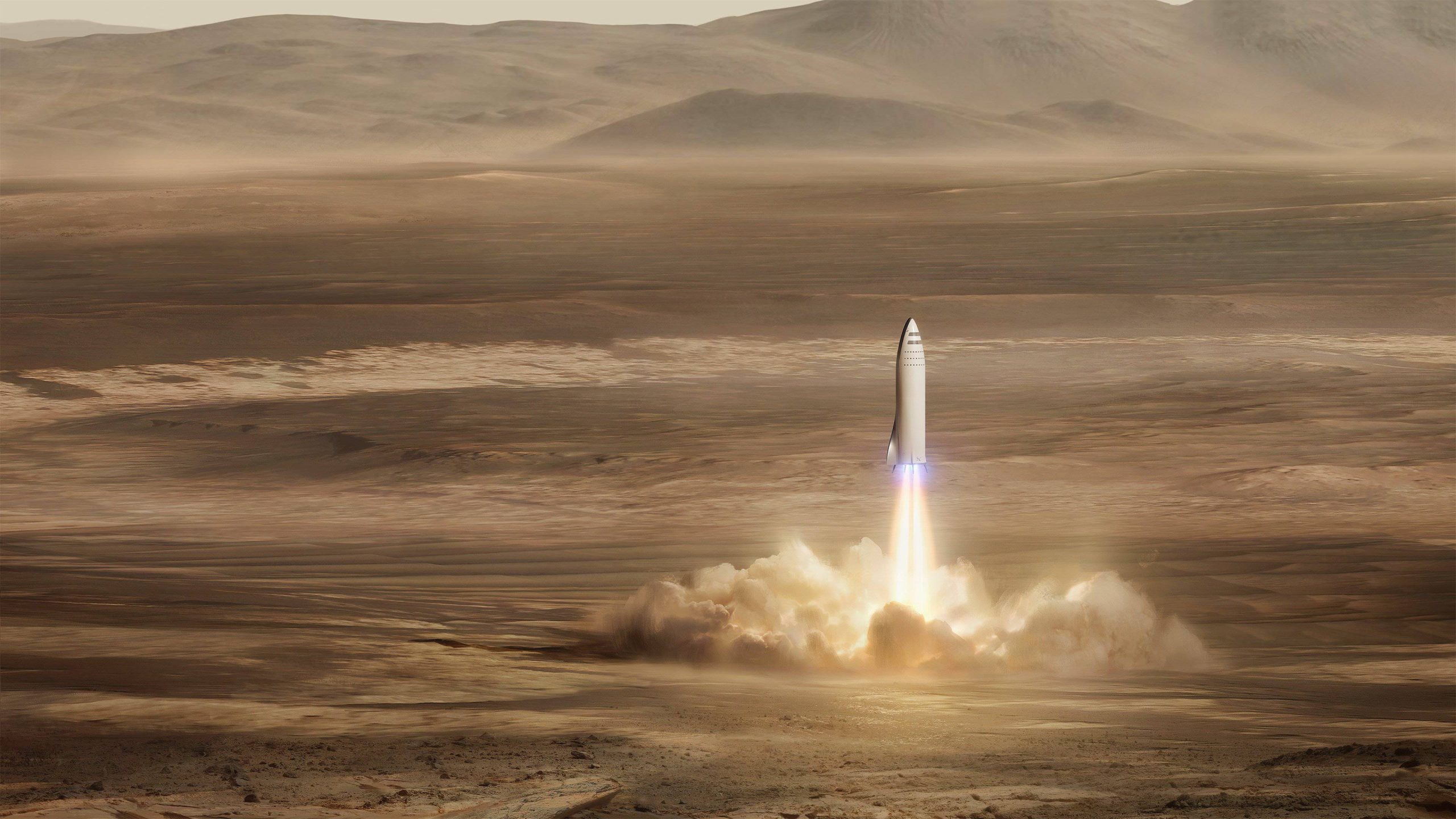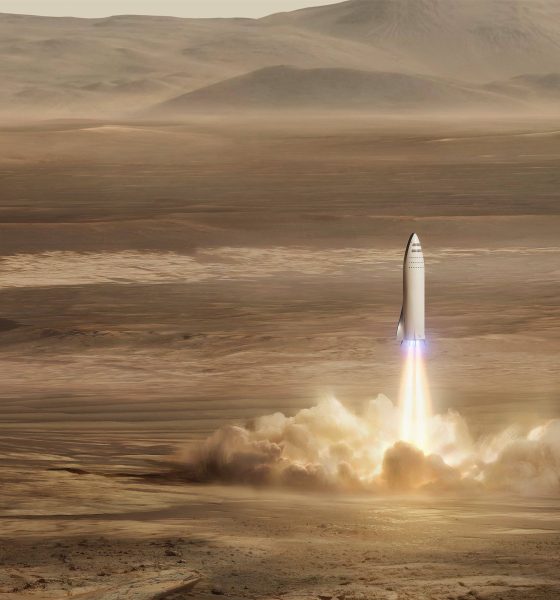

News
SpaceX granted additional $40.7M by U.S. Air Force for “BFR engine” development
SpaceX has been granted an additional $40.7 million in funding by the U.S. Air Force for development of the company’s Raptor engine.
According to a U.S. Department of Defense contract published on October 19, 2017 on defense.gov, the new funding will go towards development of a new liquid oxygen and liquid methane engine for the department’s Evolved Expendable Launch Vehicle (EELV) program. Each Raptor engine is expected to have three times the thrust of SpaceX’s Merlin 1D engine that’s currently used in the Falcon 9. The heavy lift-capable engine will support the launch of heavier payloads including large military satellites into orbit, but also serve as the foundation for SpaceX’s Interplanetary Transport System, or more recently referred to as BFR.
The Department of Defense issued the following contract:
Space Exploration Technologies Corp., Hawthorne, California, has been awarded a $40,766,512 modification (P00007) for the development of the Raptor rocket propulsion system prototype for the Evolved Expendable Launch Vehicle program. Work will be performed at NASA Stennis Space Center, Mississippi; Hawthorne, California; McGregor, Texas; and Los Angeles Air Force Base, California; and is expected to be complete by April 30, 2018. Fiscal 2017 research, development, test and evaluation funds in the amount of $40,766,512 are being obligated at the time of award. The Launch Systems Enterprise Directorate, Space and Missile Systems Center, Los Angeles AFB, California, is the contracting activity (FA8811-16-9-0001).
It’s not clear how the Air Force will utilize the powerful Raptor engines after its completion which is expected to take place by the end of April 2018, but we do know that development will take place in various locations, including SpaceX’s headquarters in Hawthorne, California; NASA’s Stennis Space Center in south Mississippi; and the Los Angeles Air Force Base, home to its Missile Systems Center.
The powerful methane-oxygen Raptor engine is intended to be the workhorse for any larger launch vehicle. SpaceX has conducted several dozen successful hot fires at the company’s McGregor, Texas testing facilities. Tests ranged from just a few seconds to 100 seconds in duration, with the only limiting factor to test duration being the size of the propellant tank for fuel.
SpaceX has completed over 1,200 seconds of firing across 42 main Raptor engine tests. pic.twitter.com/EhxbPjd8Cj
— SpaceX (@SpaceX) September 29, 2017
Serial tech entrepreneur and SpaceX CEO Elon Musk recently spoke about Raptor engine development in his Mars-focused address at the International Astronautical Congress (IAC) in Australia.
“We already have now 1,200 seconds of firing across 42 main engine tests,” said Musk. “We’ve fired it for 100 seconds. It could fire for much longer than 100 seconds. That’s just the size of the test tanks.”
Musk also provided insight on why SpaceX engineers decided to reduce the originally intended size and thrust capabilities of the Raptor engine. Musk explained to fans during a recent Reddit “Ask me anything” that the SpaceX team simply “chickened out”, due to a variety of reasons.

News
Tesla FSD fleet is nearing 7 billion total miles, including 2.5 billion city miles
As can be seen on Tesla’s official FSD webpage, vehicles equipped with the system have now navigated over 6.99 billion miles.

Tesla’s Full Self-Driving (Supervised) fleet is closing in on almost 7 billion total miles driven, as per data posted by the company on its official FSD webpage.
These figures hint at the massive scale of data fueling Tesla’s rapid FSD improvements, which have been quite notable as of late.
FSD mileage milestones
As can be seen on Tesla’s official FSD webpage, vehicles equipped with the system have now navigated over 6.99 billion miles. Tesla owner and avid FSD tester Whole Mars Catalog also shared a screenshot indicating that from the nearly 7 billion miles traveled by the FSD fleet, more than 2.5 billion miles were driven inside cities.
City miles are particularly valuable for complex urban scenarios like unprotected turns, pedestrian interactions, and traffic lights. This is also the difference-maker for FSD, as only complex solutions, such as Waymo’s self-driving taxis, operate similarly on inner-city streets. And even then, incidents such as the San Francisco blackouts have proven challenging for sensor-rich vehicles like Waymos.
Tesla’s data edge
Tesla has a number of advantages in the autonomous vehicle sector, one of which is the size of its fleet and the number of vehicles training FSD on real-world roads. Tesla’s nearly 7 billion FSD miles then allow the company to roll out updates that make its vehicles behave like they are being driven by experienced drivers, even if they are operating on their own.
So notable are Tesla’s improvements to FSD that NVIDIA Director of Robotics Jim Fan, after experiencing FSD v14, noted that the system is the first AI that passes what he described as a “Physical Turing Test.”
“Despite knowing exactly how robot learning works, I still find it magical watching the steering wheel turn by itself. First it feels surreal, next it becomes routine. Then, like the smartphone, taking it away actively hurts. This is how humanity gets rewired and glued to god-like technologies,” Fan wrote in a post on X.
News
Tesla starts showing how FSD will change lives in Europe
Local officials tested the system on narrow country roads and were impressed by FSD’s smooth, human-like driving, with some calling the service a game-changer for everyday life in areas that are far from urban centers.

Tesla has launched Europe’s first public shuttle service using Full Self-Driving (Supervised) in the rural Eifelkreis Bitburg-Prüm region of Germany, demonstrating how the technology can restore independence and mobility for people who struggle with limited transport options.
Local officials tested the system on narrow country roads and were impressed by FSD’s smooth, human-like driving, with some calling the service a game-changer for everyday life in areas that are far from urban centers.
Officials see real impact on rural residents
Arzfeld Mayor Johannes Kuhl and District Administrator Andreas Kruppert personally tested the Tesla shuttle service. This allowed them to see just how well FSD navigated winding lanes and rural roads confidently. Kruppert said, “Autonomous driving sounds like science fiction to many, but we simply see here that it works totally well in rural regions too.” Kuhl, for his part, also noted that FSD “feels like a very experienced driver.”
The pilot complements the area’s “Citizen Bus” program, which provides on-demand rides for elderly residents who can no longer drive themselves. Tesla Europe shared a video of a demonstration of the service, highlighting how FSD gives people their freedom back, even in places where public transport is not as prevalent.
What the Ministry for Economic Affairs and Transport says
Rhineland-Palatinate’s Minister Daniela Schmitt supported the project, praising the collaboration that made this “first of its kind in Europe” possible. As per the ministry, the rural rollout for the service shows FSD’s potential beyond major cities, and it delivers tangible benefits like grocery runs, doctor visits, and social connections for isolated residents.
“Reliable and flexible mobility is especially vital in rural areas. With the launch of a shuttle service using self-driving vehicles (FSD supervised) by Tesla in the Eifelkreis Bitburg-Prüm, an innovative pilot project is now getting underway that complements local community bus services. It is the first project of its kind in Europe.
“The result is a real gain for rural mobility: greater accessibility, more flexibility and tangible benefits for everyday life. A strong signal for innovation, cooperation and future-oriented mobility beyond urban centers,” the ministry wrote in a LinkedIn post.
News
Tesla China quietly posts Robotaxi-related job listing
Tesla China is currently seeking a Low Voltage Electrical Engineer to work on circuit board design for the company’s autonomous vehicles.

Tesla has posted a new job listing in Shanghai explicitly tied to its Robotaxi program, fueling speculation that the company is preparing to launch its dedicated autonomous ride-hailing service in China.
As noted in the listing, Tesla China is currently seeking a Low Voltage Electrical Engineer to work on circuit board design for the company’s autonomous vehicles.
Robotaxi-specific role
The listing, which was shared on social media platform X by industry watcher @tslaming, suggested that Tesla China is looking to fill the role urgently. The job listing itself specifically mentions that the person hired for the role will be working on the Low Voltage Hardware team, which would design the circuit boards that would serve as the nervous system of the Robotaxi.
Key tasks for the role, as indicated in the job listing, include collaboration with PCB layout, firmware, mechanical, program management, and validation teams, among other responsibilities. The role is based in Shanghai.
China Robotaxi launch
China represents a massive potential market for robotaxis, with its dense urban centers and supportive policies in select cities. Tesla has limited permission to roll out FSD in the country, though despite this, its vehicles have been hailed as among the best in the market when it comes to autonomous features. So far, at least, it appears that China supports Tesla’s FSD and Robotaxi rollout.
This was hinted at in November, when Tesla brought the Cybercab to the 8th China International Import Expo (CIIE) in Shanghai, marking the first time that the autonomous two-seater was brought to the Asia-Pacific region. The vehicle, despite not having a release date in China, received a significant amount of interest among the event’s attendees.








